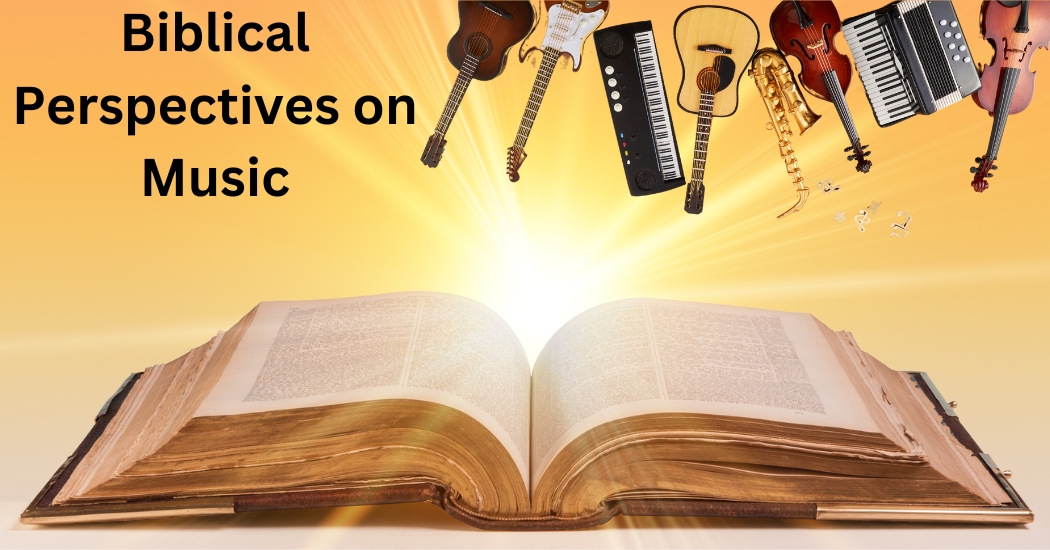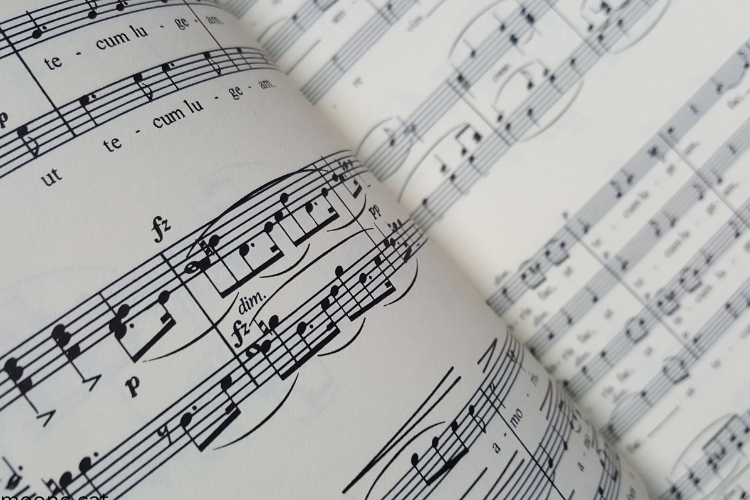In ‘Harmonious Devotion: Exploring Biblical Perspectives on Music,’ we delve into the rich tapestry of music within the Christian tradition, examining its historical roots, spiritual significance, and contemporary practices.
In this blog post, we will walk you through the healing power of music as depicted in the Bible, the integration of Eastern meditative tools such as singing bowls into Christian worship, the intricate harmonies of European hymnody, the vibrant expressions of Gospel music, and the evolving landscape of Christian musical practices.
As we navigate these themes, we uncover the profound ways in which music can serve as a conduit for divine connection, communal unity, and spiritual resonance.
Key Takeaways
- Music in the Bible is portrayed as a powerful medium for healing and spiritual connection, highlighting its integral role in worship and divine experiences.
- The use of singing bowls in Christian contexts is a testament to the faith’s adaptability, blending Eastern meditative practices with traditional Christian worship to enhance spiritual reflection.
- European Christian hymnody, with its emphasis on harmonization, has played a pivotal role in congregational participation, theological expression, and the overall worship experience.
- Gospel music’s harmonious vocals and cultural influences have significantly shaped the emotional and spiritual landscape of Christian worship, fostering a sense of unity and collective expression.
- As contemporary Christian practice continues to evolve, the incorporation of singing bowls faces both criticism and opportunities for growth, signaling a dynamic future for worship and spirituality.
The Sound of Spirituality: Biblical References to Music and Healing
The Role of Music in Biblical Narratives
The Bible is replete with instances where music plays a pivotal role in the spiritual lives of its characters. David’s harp, for instance, was more than a mere instrument; it was a tool for healing, capable of soothing the troubled spirit of King Saul. The Psalms, often attributed to David, frequently extol the virtues of music in worship, suggesting a divine connection through the act of musical praise.
In the New Testament, the power of the spoken word and touch is evident in Jesus’ healing miracles. Similarly, the Acts of the Apostles recount moments where sound and healing are intertwined, further cementing the importance of music in biblical times.
Music in the Bible is not just an art form; it is a conduit for spiritual connection and restoration.
The following points highlight the significance of music in biblical narratives:
- Music as a means of worship and praise
- The therapeutic use of music for emotional and spiritual healing
- Music as a form of prophecy and teaching
These elements underscore music’s integral role in biblical history, shaping the spiritual experience of believers and serving as a bridge to the divine.
Healing Through Harmonies: Scriptural Insights
The Bible offers profound insights into the healing power of music. David’s harp brought solace to King Saul, showcasing music’s ability to calm and heal the troubled spirit. The Psalms, rich in musical references, frequently highlight singing and the use of instruments as pathways to connect with God and find peace.
In the New Testament, the miracles of Jesus often involved healing through spoken word and touch, suggesting a deep connection between sound and restoration of health. The Acts of the Apostles further illustrate this bond, recounting instances of healing that resonate with the power of faith and sound.
The spiritual gift of music enables a person to be skilled vocally and/or instrumentally, leading others to seek the heart of God.
Exploring the potential connections between Christianity and singing bowls, one finds a blend of meditative practices and the concept of divine harmony. While some may see potential theological conflicts, personal testimonies and experiences often speak to the efficacy and resonance of these practices within a Christian framework.
Music as a Medium for Divine Connection
In the tapestry of worship, music threads itself as a potent conduit for divine connection. Music elevates the soul, transcending the mundane to touch the ethereal realms of spirituality. It is not merely an accessory to ritual; it is a vessel for the sacred, a harmonic bridge between the human and the divine.
- Spiritual Upliftment: Music’s power to uplift the spirit is undeniable, offering solace and hope.
- Encouragement: It serves as a source of strength, inspiring individuals and communities alike.
- Sacredness: The sanctity of music in worship leads us to praise and reflect on divine gifts.
Music in worship is not just an act of performance but an offering of one’s innermost reverence and devotion. It is a shared experience that reinforces the sense of belonging and vitality within the community of believers.
The resonance of music within the walls of a church or during a solemn procession is a testament to its role in deepening faith and enhancing the spiritual journey. It is a universal language that speaks to the heart, inviting all to partake in the divine harmony that it orchestrates.
Singing Bowls and Sacred Spaces: Integrating Eastern Traditions into Christian Worship
Meditative Practices in Christianity and Using Singing Bowls
The incorporation of singing bowls into Christian worship is a testament to the universal language of music and its power to transcend cultural boundaries. Singing bowls offer a unique auditory experience that can facilitate deeper meditation and spiritual connection within Christian practices.
Many Christian contemplative traditions, such as centering prayer, lectio divina, and the Ignatian method, focus on silence and stillness as pathways to encountering God. Singing bowls can complement these practices, providing a grounding sound that encourages focused attention.
Some Christian communities have begun to weave singing bowls into their worship, creating a meditative atmosphere conducive to transformative encounters with the divine.
The future of singing bowls in Christianity may see them becoming an integral part of worship services, retreats, and spiritual workshops, fostering moments of silence and connection with the divine.
The Concept of Divine Harmony
In the realm of Christian worship, the concept of divine harmony is not merely a musical idea but a spiritual metaphor. Believers strive to align themselves with God’s will, resonating with the unity and interconnectedness of all creation. Singing bowls, with their harmonious tones, serve as a tangible reminder of this aspiration.
The harmonic overtones of singing bowls are seen as symbolic representations of human experience, believed to resonate with the body’s energy centers, or chakras. While interpretations vary across cultures, the transformative power of sound and vibration is a common thread.
The pursuit of divine harmony is a journey towards spiritual attunement, where each individual seeks to become one with the rhythms and intentions of the Creator.
Potential Theological Conflicts and Resolutions
Integrating Eastern practices such as singing bowls into Christian worship can lead to potential theological conflicts. Traditional Christian views may clash with what is often perceived as New Age practices, raising concerns about syncretism and the dilution of Christian doctrine. Skepticism and scientific scrutiny also play a role, as some demand empirical evidence for the benefits of these practices.
The act of redemption is seen as a healing process for the whole earth, achieved through integration.
Addressing these conflicts requires fostering dialogue and understanding. Interfaith dialogue and case studies of successful integration can offer insights into the potential for mutual growth and learning. Below is a list of steps that can help bridge the gap:
- Addressing the Misconceptions
- The Importance of Interfaith Dialogue
- Case Studies of Successful Integration
- Potential for Mutual Growth and Learning
Personal Testimonies and Experiences with Singing Bowls
Individuals who have woven singing bowls into their Christian worship and spiritual practices often share profound accounts of transformation. Feeling a deep sense of peace and spiritual connection, many report a heightened awareness of God’s presence. These experiences suggest that singing bowls can facilitate a more focused and contemplative state, which is beneficial for prayer, meditation, and reflection.
The personal testimonies underscore the potential of singing bowls to bridge the gap between traditional Christian practices and the pursuit of a deeper spiritual journey. The table below summarizes common experiences reported by users of singing bowls in their worship:
| Experience | Frequency | Description |
|---|---|---|
| Peacefulness | High | Many describe a tranquil state of mind. |
| Spiritual Connection | Medium | Feelings of closeness to the divine. |
| Focused Prayer | Medium | Enhanced concentration during prayer. |
| Contemplative Meditation | High | Aids in deep meditation and reflection. |
The integration of singing bowls in Christian spirituality is not just about the music or the instrument; it’s about the harmonious journey towards divine resonance and inner tranquility.
Harmonization in Hymnody: The Musicality of European Christian Traditions
The Interplay of Vocal Parts in Traditional Hymns
Traditional European hymns are renowned for their emphasis on harmonization, where multiple vocal parts blend to create a sound that is both rich and resonant. The interweaving of vocal harmonies not only adds depth but also enhances the emotional resonance of the music, elevating the spiritual experience of hymn singing.
In choral settings, these hymns showcase polyphonic textures and intricate vocal arrangements, characteristic of traditional European choral music. Such arrangements bring a sense of reverence and artistry to the act of hymn singing, often accompanied by the organ or other classical instruments, which complement the vocal melodies and contribute to the grandeur of worship spaces.
The harmonious blend of vocal parts, including layered harmonies and melismatic vocal embellishments, is a hallmark of Gospel music as well, creating a sense of unity and collective expression.
The communal aspect of hymn singing is significant, fostering unity and fellowship among worshippers. Joining voices in harmony transcends individual differences, uniting diverse members of a congregation in a shared spiritual experience and promoting a sense of belonging within religious communities.
Conveying Theology Through Musical Harmony
The interplay of vocal parts in traditional hymns is not merely an aesthetic choice but a profound method of expressing theological richness. Harmonization in hymnody serves as a bridge between the intellectual understanding of Christian doctrine and the emotional resonance of faith. Each chord and melodic line weaves together to form a tapestry of sound that echoes scriptural truths and the beauty of divine creation.
- Theological Depth and Scriptural Alignment: Hymns often reflect deep theological concepts and align with biblical narratives, offering a form of spiritual instruction.
- Emotional Resonance: The blending of harmonies enriches the worship experience, invoking feelings of gratitude and reverence.
- Collective Expression: Through harmonious vocals, worshippers participate in a unified act of praise, strengthening the communal aspect of worship.
The harmonious tones of hymns are not just notes in a melody; they are the heartbeat of a faith community, pulsating with the life and spirit of shared belief.
The practice of singing hymns is a dynamic process that involves the congregation in a shared experience, fostering a sense of unity and participation. As the voices rise in harmony, the message of the Gospel becomes a lived experience, transforming the church atmosphere into one of collective devotion and spiritual upliftment.
The Role of Hymns in Congregational Participation and Worship
Hymns have long been the heartbeat of congregational worship, offering a melodic bridge between the individual and the collective spiritual journey. Facilitating Corporate Worship, praise hymns serve as a unifying force, enabling the assembly to collectively engage in the act of praise and adoration. The communal singing of hymns fosters a sense of unity and participation, allowing worshippers to express their shared faith and devotion in harmony.
Encouraging Active Participation, hymn singing transcends passive observation and invites worshippers to engage fully in the worship experience. The act of singing hymns fosters a sense of involvement and investment in the communal expression of faith. This active participation is crucial as it embodies the community aspect of worship, where every voice contributes to the collective praise.
Traditional European hymns have been integral to liturgical worship, reflecting themes of praise, thanksgiving, repentance, and theological tenets of Christian doctrine.
In essence, hymns enrich the worship experience, providing a means for congregations to engage with the sacred narratives and theological truths of the Christian faith within the context of communal worship. They are not just songs but vessels that carry the weight of tradition and belief, echoing through the halls of churches across the world.
Gospel Music: A Symphony of Voices in Christian Worship
Harmonious Vocals and the Unity of the Gospel Choir
The harmonious blend of vocal parts in Gospel music is more than a mere aesthetic choice; it is a powerful symbol of unity within the choir and the congregation. The collective voice that emerges from Gospel choirs is a testament to the shared faith and devotion of its members. This unity is not only heard but also felt, as the interplay of voices resonates with the emotional and spiritual experiences of the worshippers.
Fostering a sense of community is intrinsic to the Gospel tradition. The act of singing together—melding soprano, alto, tenor, and bass—creates a bond that transcends individual differences. It is in this space that worshippers find a sense of belonging and solidarity, which is crucial for a vibrant and supportive faith community.
The rise of Gospel choirs and quartets in the early 20th century marked a significant moment in the history of Christian worship. Their travels and performances not only spread the Gospel message but also showcased the profound impact of collective singing on communal worship.
The emotional and spiritual resonance of Gospel harmonies is undeniable. It is a resonance that echoes the biblical call to lift voices in praise and surrender hearts to God, allowing believers to enter a deeper level of worship.
Cultural and Religious Influences on Gospel Music
The cultural and religious influences on Gospel music are deeply intertwined, shaping the music’s lyrical themes, musical styles, and communal significance. These influences have played a pivotal role in defining the expressive and spiritual nature of Gospel music within the African American religious experience and beyond.
Gospel music has played a pivotal role in shaping the cultural expression and identity of African American communities. It has provided a platform for the celebration of cultural heritage, religious traditions, and communal solidarity. Through its fusion of African musical elements, Christian evangelical fervor, and social commentary, Gospel music has become a symbol of cultural pride and resilience.
The music’s influence has extended beyond its cultural origins, resonating with diverse audiences and communities, and contributing to the global appreciation of African American musical traditions.
The emotive and celebratory nature of Gospel music has resonated with audiences across different cultural contexts, leading to the adaptation and incorporation of Gospel elements into various styles of worship music and popular music genres.
The Emotional and Spiritual Resonance of Gospel Harmonies
Gospel music, with its Heavenly Harmony, is renowned for its ability to stir the soul and evoke deep emotional responses. The harmonious vocals and melismatic embellishments create a powerful sense of unity and collective expression, which is central to the genre’s spiritual impact. This emphasis on vocal harmony not only enhances the music’s aesthetic appeal but also strengthens the emotional and spiritual connection among worshippers.
Researchers have found that gospel music can significantly reduce stress and improve mood, attributed to its lyrical content that often speaks of hope and resilience. The emotional intensity and fervor of Gospel music, characterized by passionate lyrics and soulful vocal expressions, create a deeply moving and uplifting experience.
The melodies and lyrics of Gospel hymns elicit a range of emotions, from joy and exuberance to introspection and contrition, facilitating a holistic and authentic worship experience.
Understanding the musical characteristics of Gospel music provides insight into its expressive and dynamic nature, as well as its profound impact on religious worship and cultural expression.
The Resonance of Change: Singing Bowls in Contemporary Christian Practice
Future of Singing Bowls in Christianity
The future of singing bowls in Christianity is poised for growth, as these instruments offer a unique avenue for spiritual expression and contemplation. Their integration into Christian worship practices is already underway, with singing bowls being used to enhance moments of silence and reflection during services. This trend suggests a broader acceptance and incorporation of meditative practices within the Christian tradition.
- Worship services incorporating singing bowls for contemplation and reflection
- Use in Christian retreats and mindfulness workshops
- Potential for singing bowls in personal devotional practices
The resonating tones of singing bowls create a conducive environment for connection with God, offering a harmonious backdrop for prayer and meditation. As the Christian community continues to explore the benefits of these practices, singing bowls may become a staple in fostering a deeper spiritual experience.
The power of singing together, whether in ensembles or congregations, is amplified by the profound impact on our health and well-being.
Exploring Further Research and Integration
The exploration of singing bowls within Christian practices is not just about adoption, but about understanding and integration. Research into the efficacy and theological compatibility of singing bowls is crucial for their acceptance and meaningful use in worship.
Opportunities for Integration:
- Mutual growth and learning between Christian and Eastern traditions
- The potential for deeper spiritual experiences
- Addressing misconceptions through education
The journey towards integration is paved with both challenges and revelations, requiring an open-minded approach to both the historical and contemporary aspects of worship.
Case studies of successful integration highlight the transformative power of singing bowls in Christian contemplative practices. These narratives not only provide a blueprint for others but also encourage a dialogue that bridges the gap between traditions. As we look to the future, the changing face of Christian worship invites us to consider new avenues for spiritual enrichment.
The Changing Face of Christian Worship
The integration of singing bowls into Christian worship reflects the changing face of Christian spirituality and worship practices. As the global landscape becomes more interconnected and diverse, Christians are seeking new ways to engage with their faith and experience God’s presence. Singing bowls offer an avenue for individuals to deepen their spiritual journeys, fostering a greater sense of awe, reverence, and connectedness.
Christian worship takes various forms and practices, depending on the denomination and cultural context. Common elements of Christian worship include prayer, singing hymns, reading and studying the Bible, participating in sacraments or ordinances (such as baptism and communion), and gathering as a community for worship services. Christianity encompasses a wide range of worship styles and traditions, from formal liturgical services to contemporary praise and worship gatherings. Worship serves as a way for believers to express their devotion and connect with the divine.
The use of singing bowls in Christian contexts is not just a fusion of Eastern and Western spiritual practices, but also a symbol of the evolving nature of worship and the openness of the faith community to new forms of expression.
- Potential for Mutual Growth and Learning
- Future of Singing Bowls in Christianity
- Exploring Further Research
- Opportunities for Integration
- The Changing Face of Christian Worship
Navigating Critics and Controversies
In the journey of integrating singing bowls into Christian worship, navigating critics and controversies is an inevitable challenge. Skepticism often arises from traditional Christian views that may perceive New Age practices as incompatible with Christian doctrine. Yet, it is essential to address these concerns with compassion and clarity.
- Skepticism and Scientific Scrutiny
- Addressing the Misconceptions
- Bridging the Gap: Fostering Dialogue and Understanding
The key to overcoming resistance is through fostering dialogue and understanding, aiming for a harmonious resolution that respects both tradition and innovation.
While some view the use of singing bowls as a divergence from traditional worship, others see it as a potential for mutual growth and learning. The importance of interfaith dialogue cannot be overstressed, as it opens doors to case studies of successful integration and a future where singing bowls might harmonize within the Christian faith.
Conclusion
In exploring the biblical perspectives on music and the incorporation of singing bowls into Christian worship, we have traversed a landscape rich with historical resonance and spiritual depth. The harmonious sounds of singing bowls, reminiscent of divine harmony, offer a unique auditory experience that can enhance the spiritual journey of believers.
This journey reflects the Christian pursuit of aligning with God’s will, as music and sound play a pivotal role in healing, meditation, and worship. While the integration of singing bowls in Christian contexts may raise theological questions, it also presents an opportunity for mutual growth and learning.
As Christianity continues to evolve, embracing diverse cultural expressions of worship, it is crucial to maintain a dialogue that honors tradition while welcoming innovation. The future of singing bowls in Christianity, as with all aspects of faith, will likely be one of continued exploration, discernment, and, ultimately, harmonious devotion.
Frequently Asked Questions
What are some biblical references to sound and healing?
Biblical references to sound and healing include instances where music is used in worship and celebration, as well as in times of warfare and healing. For example, the Psalms are filled with verses that highlight the importance of music in connecting with God and promoting spiritual well-being.
Can singing bowls be integrated into Christian worship?
Yes, singing bowls can be integrated into Christian worship as they are seen by some as a tool for meditation and reflection, potentially enhancing the worship experience. However, their use is subject to personal beliefs and the acceptance within specific Christian communities.
What is the concept of divine harmony in Christianity?
The concept of divine harmony in Christianity refers to the idea that God is the source of all harmony and that believers are called to align themselves with God’s will and purposes. Singing bowls, with their harmonious tones, can metaphorically represent this divine harmony and serve as a reminder of God’s presence.
How do traditional European hymns use harmonization?
Traditional European hymns use harmonization by blending multiple vocal parts together to create a rich and resonant sound. This harmonization adds depth and emotional resonance to the hymns, enhancing the spiritual and aesthetic experience of worship.
What role does Gospel music play in Christian worship?
Gospel music plays a significant role in Christian worship by providing a symphony of voices that unite in harmonious vocals. The richly layered harmonies and melismatic vocal embellishments create a sense of unity and collective expression, enhancing the spiritual and emotional impact of the music.
How can potential theological conflicts over the use of singing bowls in Christian worship be addressed?
Potential theological conflicts over the use of singing bowls in Christian worship can be addressed through respectful dialogue and discernment. It is important to recognize that Christian worship has historically incorporated elements from diverse cultures, and an understanding of the spiritual significance of singing bowls can help resolve conflicts.










